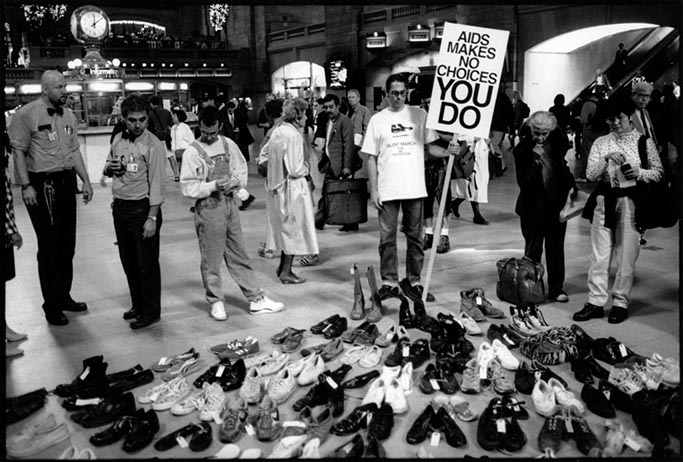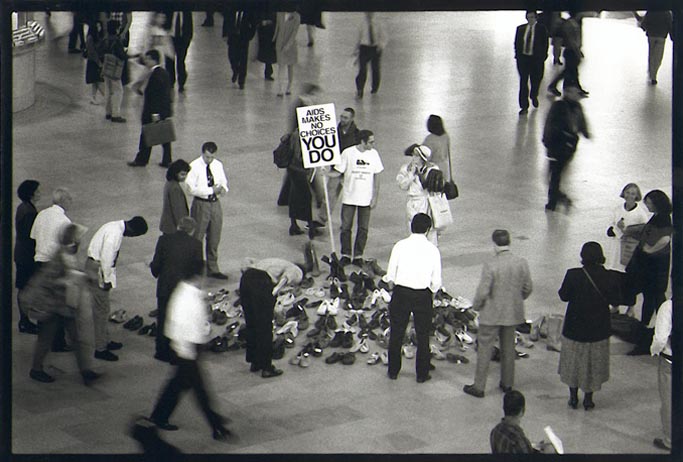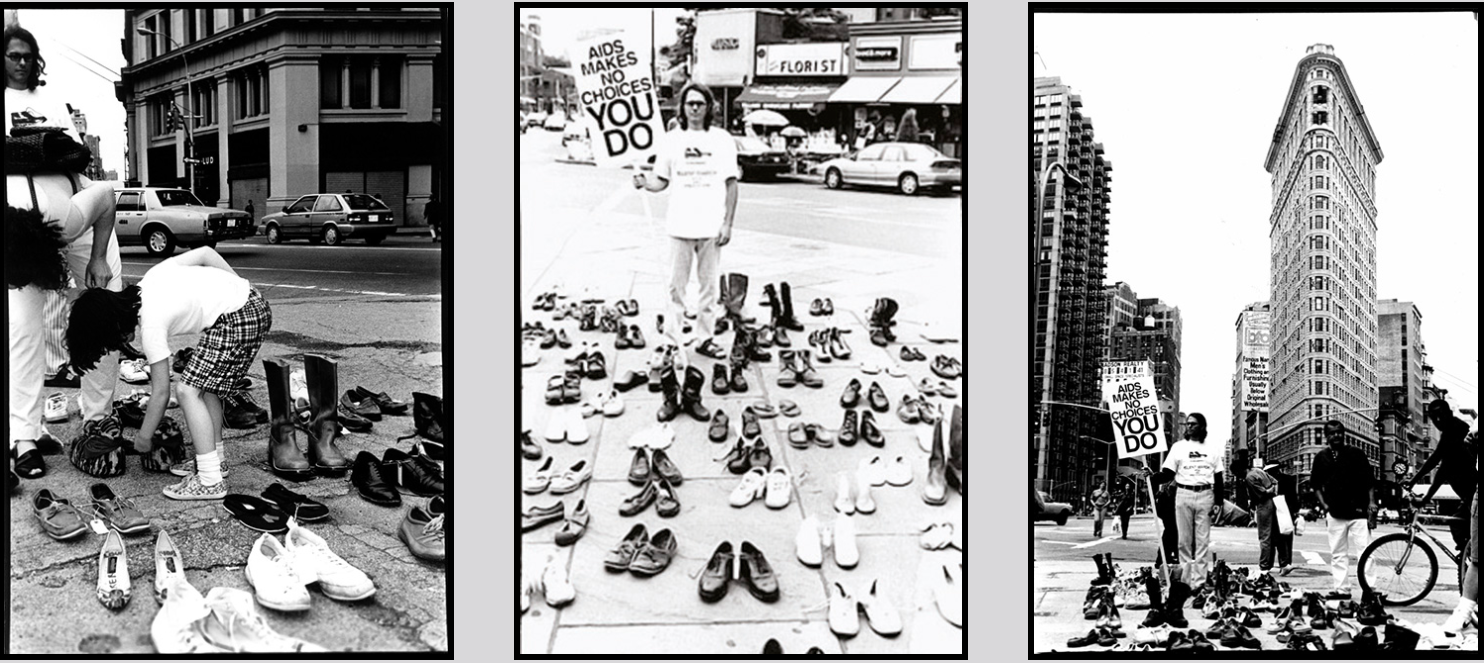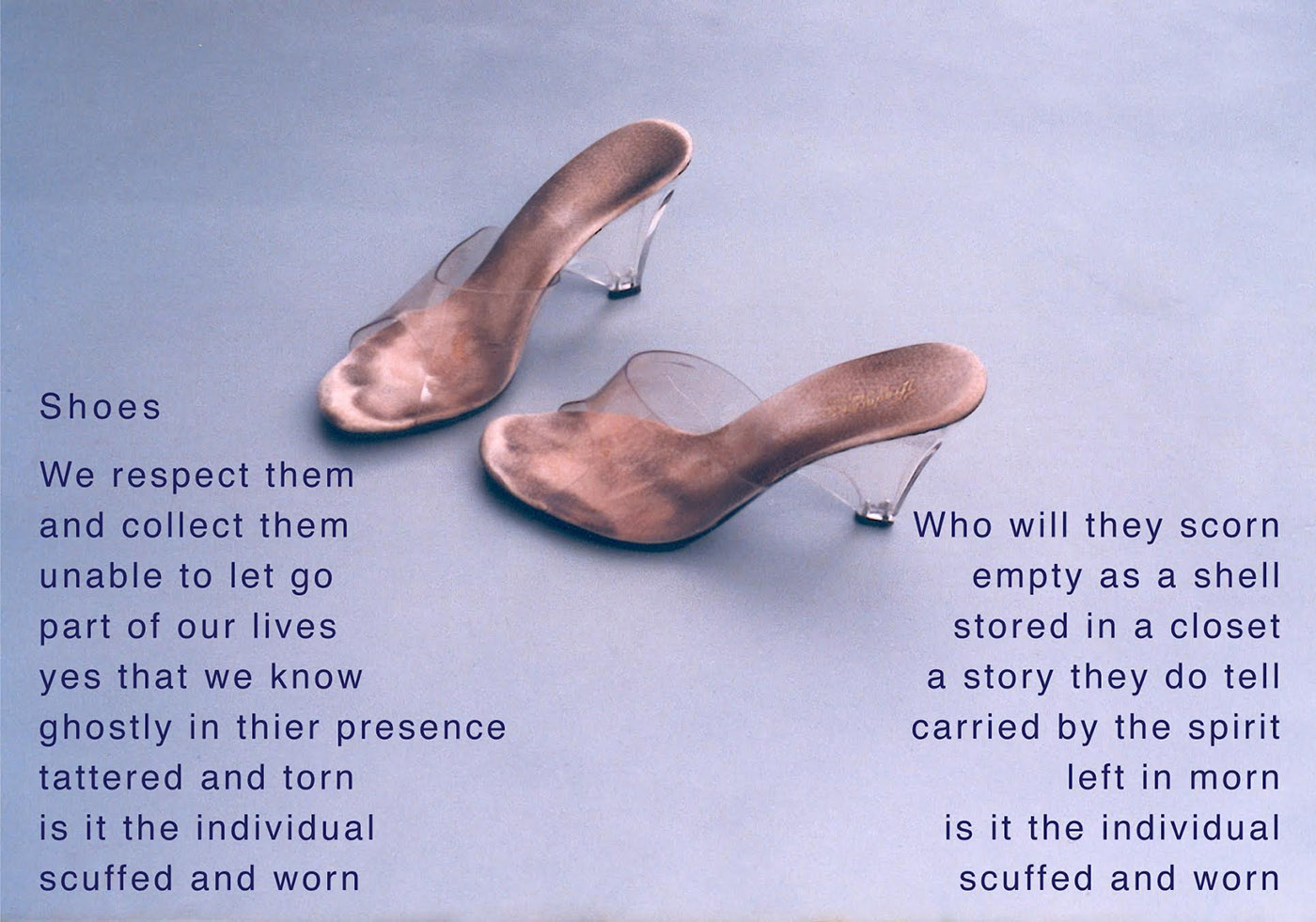Silent March
“Silent March” uses shoes belonging to people with HIV and AIDS, promoting non-discriminating AIDS awareness. I place myself in the installation wearing a T-shirt saying “Silent March for HIV Prevention” and a sign stating, “AIDS makes no choices, You Do”. This project came at a time when I felt people needed to understand the devastating affect of AIDS through an identifiable medium. The project included public installations, a video, and service announcement.
 Grand Central Terminal - New York City - 1995
Grand Central Terminal - New York City - 1995
 Photo: Douglas Levere
Photo: Douglas Levere
The central component of this project contains shoes collected from individuals living with HIV and AIDS-related complex, as well as those who already have lost their life to the disease. The strength behind this installation is in its void. There are no physical beings present in this march. There are no voices chanting for recognition. There are just the souls of individuals in silence. This project reaches out to every community by providing an opportunity to understand the ramifications and relevance of AIDS through impactful visual presentations. “Silent March” integrates HIV prevention, art, education outreach & volunteer recruitment.
I removed the physical being to clearly show the universal impact of AIDS through a common image - shoes. Up until now, denial that AIDS affects all segments of society has been a formidable barrier to addressing relevant issues of AIDS. This installation eliminates that barrier by forming a new relationship between the viewer and the disease by taking a familiar object - shoes - to represent an unfamiliar (or uncomfortable) image - AIDS - to initiate understanding. With the physical being gone, in this visual presentation, the viewer can no longer distance himself or herself by the “other” people syndrome. Without that comfort zone they are faced with truth.

Photo Dale Grant
The shoes contained in a “Silent March” installation are identifiable to the viewer, like those on their feet or at home in a closet. It is through this similarity that the viewer is pulled into the boundaries of the installation. In other words, putting themselves in the shoes that lie before them. By crossing the barrier that has separated them from understanding, viewers can begin to comprehend the fact that AIDS has no agenda or mercy.
“Silent March” is designed to awaken society by prompting a response to the human lives consumed by HIV and AIDS. It is easy to recall imagery of devastation represented by the overwhelming piles of personal objects of Holocaust victims. This type of imagery is a clear, constant reminder of a society that allowed indifference and difference as a means to tolerate massacre.
“Silent March” was designed as a multi segmented project to assist in preventing the spread of HIV. I dedicated many years trying to get sites to show this project and its segments. The resistance I met while trying to reach my project goals was disheartening.
It is my ongoing desire to create a memorial piece using the shoes that I collected to honor the lives consumed by the AIDS pandemic.


Silent March Public Service Announcement : running time 0:33
Silent March Grand Central Terminal - New York City 1995 : running time 3:44

